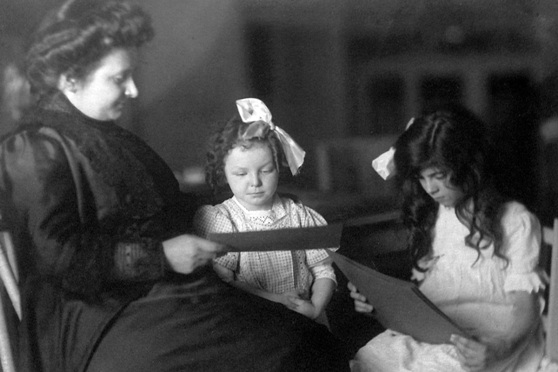January 6 in History
1907 – Maria Montessori opens her first school and daycare centre for working class children in Rome, Italy
Maria Tecla Artemisia Montessori (1870 – 1952), the Italian physician and educator best known for the philosophy of education that bears her name, and her writing on scientific pedagogy, opened her first Casa dei Bambini, or Children’s House, in Rome on this day is 1907, enrolling 50 or 60 children between the ages of two or three and six or seven. At first, the classroom was equipped with a teacher’s table and blackboard, a stove, small chairs, armchairs, and group tables for the children, and a locked cabinet for the materials that Montessori had developed at the Orthophrenic School, a medico-pedagogical institute for training teachers in educating mentally disabled children, where she was the co-director. Activities for the children at Casa dei Bambini included personal care such as dressing and undressing, care of the environment such as dusting and sweeping, and caring for the garden.
In the first classroom, Montessori observed behaviours in the young children which formed the foundation of her educational method. She noted episodes of deep attention and concentration, multiple repetitions of activity, and a sensitivity to order in the environment. Given a free choice of activity, the children showed more interest in practical activities and Montessori’s materials than in toys provided for them and were surprisingly unmotivated by sweets and other rewards. Over time, she saw a spontaneous self-discipline emerge.
Based on her observations, Montessori implemented a number of practices that became hallmarks of her educational philosophy and method. She replaced the heavy furniture with child-sized tables and chairs light enough for the children to move, and placed child-sized materials on low, accessible shelves. She expanded the range of practical activities such as sweeping and personal care to include a wide variety of exercises for the care of the environment and the self, including flower arranging, hand washing, gymnastics, care of pets, and cooking. She also included large open-air sections in the classroom encouraging children to come and go as they please in the room’s different areas and lessons.
She felt by working independently children could reach new levels of autonomy and become self-motivated to reach new levels of understanding. Montessori also came to believe that acknowledging all children as individuals and treating them as such would yield better learning and fulfilled potential in each particular child. Today, Montessori’s revolutionary educational approach is practiced in many public and private schools globally.
-Wikipedia


